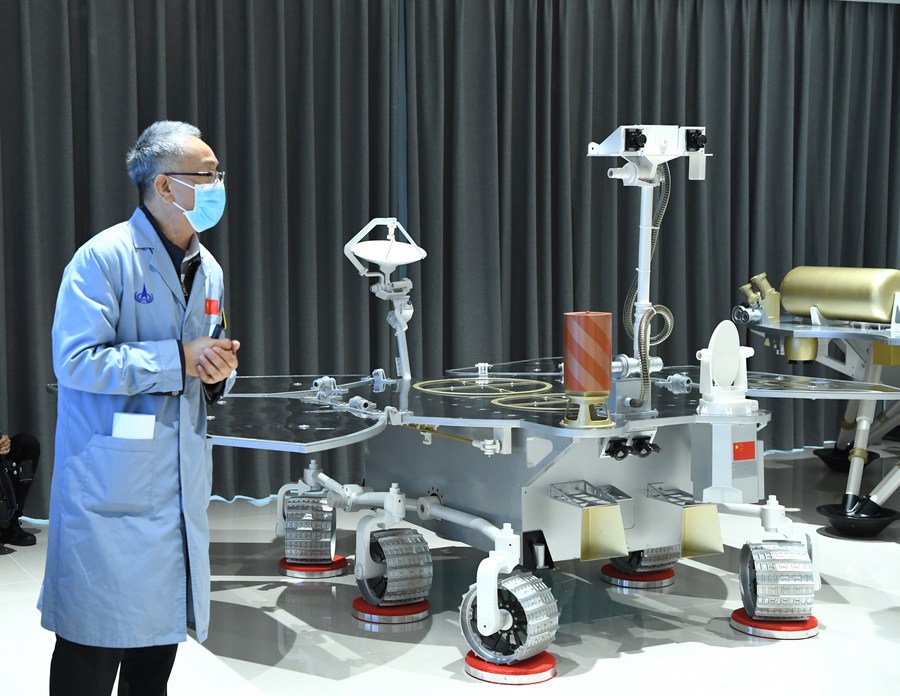
Zhang Rongqiao, chief designer of China's first Mars exploration mission, speaks at the Beijing Aerospace Control Center in Beijing, capital of China, May 15, 2021. (Xinhua/Rao Aimin)
BEIJING, Dec. 16 (Xinhua) -- When China's Mars lander successfully touched down on the red planet on May 15, the control center in Beijing was full of cheers and applause. Zhang Rongqiao, however, was spotted shedding tears.
Born in 1966, Zhang, the chief designer of China's first Mars exploration mission, was included on Thursday in Nature's list of 10 people who were part of big stories in science in 2021, according to the China National Space Administration.
"I was moved by the unremitting efforts of the whole program team. I felt grateful for the support coming from all sectors. With every feeling rushing to my heart, I could not help but shed tears, bitter and sweet," he said in an interview with Nature.
The landing marked an important step in China's interstellar exploration and a leap from the exploration of the Earth-Moon system to interplanetary exploration. It was the first time in the world that orbiting and landing on Mars has been completed in one launch mission.
"I got the taste of the joy of achievement just like the Chinese saying 'it takes ten years to sharpen a good sword,'" Zhang said.
Tianwen-1, consisting of an orbiter, a lander and a rover, was launched from the Wenchang Spacecraft Launch Site on the coast of southern China's island province of Hainan on July 23, 2020.
Zhang was responsible for not only Tianwen-1's technical work such as engineering development, launch and flight control but also the organization of scientific research of the mission.
Their team faced enormous challenges on the way to Mars.
They knew little about the strange and complex environment of Mars. There were many unknowns about its surface topography, meteorological conditions, and space environment.
"We may not even know what we do not know about," Zhang said.
In order to make the probe better adapted to the unknown environment, they made a comprehensive and detailed plan for its design.
They adopted an active suspension structure system with six independently-driven wheels, which enabled the rover to realize a variety of motion forms such as crab-walking and worm-wriggling. The rover thus is able to drive around and carry out scientific exploration activities against the complex geographical environment on Mars.
Zhang believes that the success of Tianwen-1 will greatly promote the development of China's space science, especially planetary science research.
He said that scientists could acquire first-hand data in Martian science, which can meet the demand for scientific data from the planetary science community and serve as the basic foundation for planetary science research.
The Tianwen-1 mission is the first step in China's planetary exploration, which will be followed by asteroid exploration, Mars sample return and Jovian system and interplanetary flyby exploration, according to Zhang.
In the future, China will carry out more deep-space exploration activities, and make a Chinese contribution to the further understanding of the universe by humankind, he said. ■




